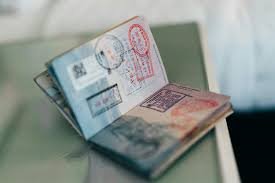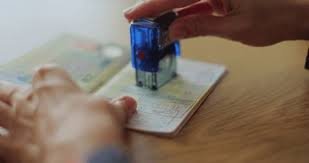Types of Passport Stamps
Entry and Exit Stamps
Entry and exit stamps are the most common types of passport stamps. Authorities issue these stamps at border crossings. They indicate the date and location of entry or exit. These stamps help maintain border security and track traveler movements. Each stamp provides important information about a traveler’s journey. Many travelers cherish these stamps as symbols of their adventures.
Visa Stamps
Visa stamps grant permission to enter a specific country. They often require additional paperwork and fees. Countries issue visas based on various criteria, such as tourism or work. Visa stamps can vary widely in design and color. Some visas allow multiple entries, while others are single-entry only. Travelers often display these stamps with pride, showcasing their exploration.
Special Commemorative Stamps
Special commemorative stamps celebrate significant events or anniversaries. Countries often release these stamps during cultural festivals or national holidays. They feature unique designs and limited availability, making them special collectibles. Commemorative stamps capture a moment in time and connect travelers to the culture. These stamps enhance the travel experience and create lasting memories. Travelers often seek these stamps to enrich their collections.
The Art of Collecting Passport Stamps
How to Start Your Collection
Starting a passport stamp collection is easy and rewarding. Begin by ensuring your passport is always up to date. Each time you travel, request a stamp at immigration. Keep track of the countries you visit for better organization. Consider using a dedicated travel journal to record your experiences. This journal can accompany your collection and enhance storytelling.
Organizing and Displaying Your Stamps
Organizing your stamps can be a fun and creative process. Use a scrapbook or a dedicated album for display. Group stamps by region, date, or personal significance. Consider using clear sleeves to protect the stamps while showcasing them. Label each stamp with the corresponding country and date for easy reference. This method adds context and detail to your collection.
Tips for Getting Unique Stamps
To find unique passport stamps, explore lesser-known destinations. Visit local attractions and events for special commemorative stamps. Engage with local customs and ask officials for unique stamps. Some countries offer limited edition stamps during festivals. Connect with fellow travelers for tips on hidden gems. Embrace every opportunity to enrich your collection. Unique stamps will enhance your travel stories and memories.
Passport Stamps Around the World
Notable Designs and Features
Passport stamps showcase diverse designs and unique features from around the globe. Many stamps include intricate graphics representing national symbols. Some feature colorful patterns that reflect cultural heritage and history. Countries often incorporate security elements, such as holograms and watermarks. These features help prevent counterfeiting and enhance authenticity. Travelers appreciate stamps that tell a story about the nation visited. Each design captures the essence of the country’s identity.
Unique Stamps from Different Countries
Various countries offer unique passport stamps that attract collectors. For example, Bhutan’s stamps often depict its vibrant culture and wildlife. In Japan, stamps may feature seasonal motifs, like cherry blossoms. Countries like Egypt offer stamps showcasing ancient monuments, such as the pyramids. These unique designs make collecting exciting and rewarding. Travelers often seek stamps that reflect their personal experiences and adventures.
Rare and Collectible Stamps
Some passport stamps are rare and highly sought after by collectors. Limited edition stamps often commemorate significant events or anniversaries. Countries may issue these stamps for only a short time. Stamps from less-traveled regions can also be rare, adding to their appeal. Collectors value stamps that tell unique stories or highlight cultural significance. Acquiring these rare stamps enhances any collection and offers bragging rights.
The Emotional Value of Passport Stamps
Stories Behind Each Stamp
Each passport stamp carries a unique story from a traveler’s journey. These stamps often remind individuals of special moments. For example, a stamp from Italy may evoke memories of delicious meals and breathtaking scenery. Travelers often recall the people they met and experiences they shared. A stamp can symbolize personal growth and new discoveries. Each mark captures the essence of an adventure, making it significant. Many travelers cherish the emotional connections tied to their stamps.
Creating a Personal Travel Narrative
Passport stamps help create a personal travel narrative over time. They serve as a visual diary of experiences and emotions. As travelers add stamps, they build a timeline of their journeys. This narrative connects places visited, adventures taken, and challenges faced. Each stamp reflects a chapter in the traveler’s life story. Sharing these narratives with friends and family fosters deeper connections. It inspires others to explore the world and create their own stories. Ultimately, passport stamps become more than just marks; they embody cherished memories and personal growth. They transform travel into a meaningful, emotional experience.

Digital Alternatives to Passport Stamps
E-Passports and Digital Verification
E-passports represent a modern approach to travel documentation. They contain embedded electronic chips for enhanced security. These chips store biometric information, such as fingerprints and facial recognition data. E-passports facilitate faster border control and reduce wait times. Travelers use digital verification methods to streamline their journeys. Many countries now accept e-passports for international travel. This shift improves security while maintaining convenience for travelers. However, the personal touch of traditional stamps is lost.
The Future of Travel Documentation
The future of travel documentation may rely heavily on digital technology. Innovations like blockchain could provide secure, tamper-proof records. Biometric identification may replace physical stamps entirely in coming years. This evolution aims to enhance efficiency and security in global travel. As technology advances, traditional methods may become obsolete. However, many travelers still cherish the tactile experience of stamps. Digital documentation will need to balance security and nostalgia. Ultimately, the travel experience will continue to evolve with technology. Collectors may seek new ways to preserve their travel memories in a digital world.
Challenges and Considerations
Lost or Damaged Passports
Lost or damaged passports can pose significant challenges for travelers. Replacing a passport requires time and effort at consulates. Travelers often face delays, which can disrupt their travel plans. A missing passport also means losing valuable stamps and memories. To mitigate this risk, travelers should keep copies of their passports. Storing important documents securely helps prevent loss and damage. Using protective cases can also safeguard passports during travel. In emergencies, understanding local procedures for passport replacement is essential.
The Impact of COVID-19 on Stamping Practices
COVID-19 significantly impacted global travel and stamping practices. Many countries implemented strict entry requirements and health protocols. Travelers faced additional challenges, including quarantine measures and testing. Some border authorities reduced stamp usage to streamline processing. Digital verification methods gained popularity during this time for efficiency. These changes altered the traditional experience of collecting passport stamps. As travel resumes, many hope for a return to pre-pandemic practices. However, some adaptations may remain in place for safety. Travelers must stay informed about evolving regulations to navigate these challenges effectively. Ultimately, the pandemic reshaped how we think about travel documentation and experiences.
FAQs
What are passport stamps?
Passport stamps are official marks placed in passports to indicate entry and exit from countries.
How can I start collecting passport stamps?
Begin by traveling internationally and requesting stamps at border crossings. Keep a travel journal to document experiences.
Are e-passports replacing traditional passport stamps?
Yes, e-passports use digital verification methods, but many travelers still cherish traditional passport stamps.
What should I do if I lose my passport?
Report the loss immediately to your country’s consulate or embassy. Follow their instructions for obtaining a replacement.
Can I get a stamp if I don’t need a visa?
Yes, many countries provide stamps even for visa-exempt travelers upon entry and exit.
Conclusion
Passport stamps hold significant emotional and cultural value for travelers worldwide. They capture unique stories and create lasting memories. While digital alternatives like e-passports gain popularity, the charm of traditional stamps remains. Travelers continue to seek connections through their stamps, cherishing each mark as a symbol of adventure. Despite challenges like lost passports or the impact of COVID-19, the passion for collecting passport stamps endures. As travel evolves, so too will the methods we use to document our journeys, blending tradition with innovation. Embracing both digital and physical forms of travel documentation allows travelers to celebrate their experiences fully.


